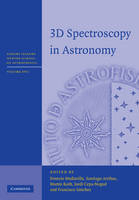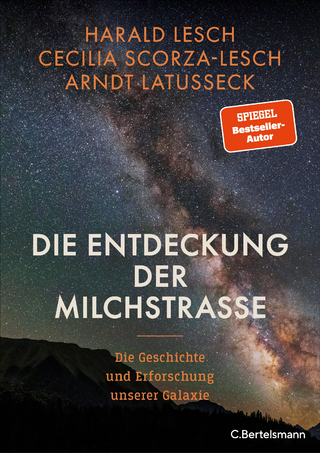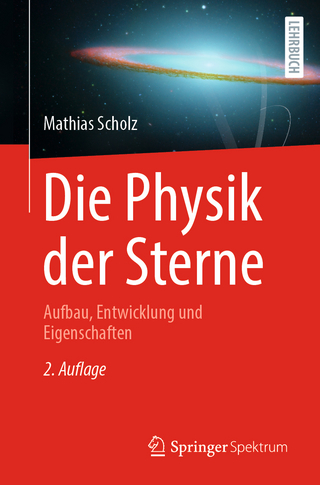
3D Spectroscopy in Astronomy
Seiten
2010
Cambridge University Press (Verlag)
978-0-521-89541-5 (ISBN)
Cambridge University Press (Verlag)
978-0-521-89541-5 (ISBN)
Containing lectures from the seventeenth Winter School of the Canary Islands Astrophysics Institute, this book explores 3D spectroscopy techniques and data. Simultaneously storing both spectral and spatial information, 3D spectroscopy offers a new way to tackle astrophysical problems, and opens up new lines of research.
Simultaneously storing both spectral and spatial information, 3D spectroscopy offers a new way to tackle astrophysical problems, and opens up new lines of research. Since its inception in the eighties and early nineties, research in this field has grown enormously. Large telescopes all around the world are now equipped with integral field units, and two instruments of the James Webb Space Telescope will have integral field spectroscopic capabilities. Nowadays, more effort is dedicated to refining techniques for reducing, analysing and interpreting the data obtained with 3D spectrographs. Containing lectures from the seventeenth Winter School of the Canary Islands Astrophysics Institute, this book explores 3D spectroscopy techniques and data. A broad and balanced presentation of research in this field, it introduces astronomers to a new generation of instruments, widening the appeal of integral field spectroscopy and helping it become a powerful tool in tackling astrophysical problems.
Simultaneously storing both spectral and spatial information, 3D spectroscopy offers a new way to tackle astrophysical problems, and opens up new lines of research. Since its inception in the eighties and early nineties, research in this field has grown enormously. Large telescopes all around the world are now equipped with integral field units, and two instruments of the James Webb Space Telescope will have integral field spectroscopic capabilities. Nowadays, more effort is dedicated to refining techniques for reducing, analysing and interpreting the data obtained with 3D spectrographs. Containing lectures from the seventeenth Winter School of the Canary Islands Astrophysics Institute, this book explores 3D spectroscopy techniques and data. A broad and balanced presentation of research in this field, it introduces astronomers to a new generation of instruments, widening the appeal of integral field spectroscopy and helping it become a powerful tool in tackling astrophysical problems.
Preface; Acknowledgements; 1. Introductory review and technical approaches Martin M. Roth; 2. Observational procedures and data reduction James E. H. Turner; 3. 3D Spectroscopy instrumentation M. A. Bershady; 4. Analysis of 3D data Pierre Ferruit; 5. Science motivation for IFS and galactic studies F. Eisenhauer; 6. Extragalactic studies and future IFS science Luis Colina; 7. Tutorials: how to handle 3D spectroscopy data Sebastian F. Sánchez, Begona García-Lorenzo and Arlette Pécontal-Rousset.
| Erscheint lt. Verlag | 28.1.2010 |
|---|---|
| Reihe/Serie | Canary Islands Winter School of Astrophysics |
| Verlagsort | Cambridge |
| Sprache | englisch |
| Maße | 180 x 253 mm |
| Gewicht | 720 g |
| Themenwelt | Naturwissenschaften ► Physik / Astronomie ► Astronomie / Astrophysik |
| Naturwissenschaften ► Physik / Astronomie ► Optik | |
| ISBN-10 | 0-521-89541-3 / 0521895413 |
| ISBN-13 | 978-0-521-89541-5 / 9780521895415 |
| Zustand | Neuware |
| Informationen gemäß Produktsicherheitsverordnung (GPSR) | |
| Haben Sie eine Frage zum Produkt? |
Mehr entdecken
aus dem Bereich
aus dem Bereich
die Geschichte und Erforschung unserer Galaxie
Buch | Hardcover (2023)
C.Bertelsmann (Verlag)
30,00 €
Aufbau, Entwicklung und Eigenschaften
Buch | Softcover (2024)
Springer Spektrum (Verlag)
64,99 €


